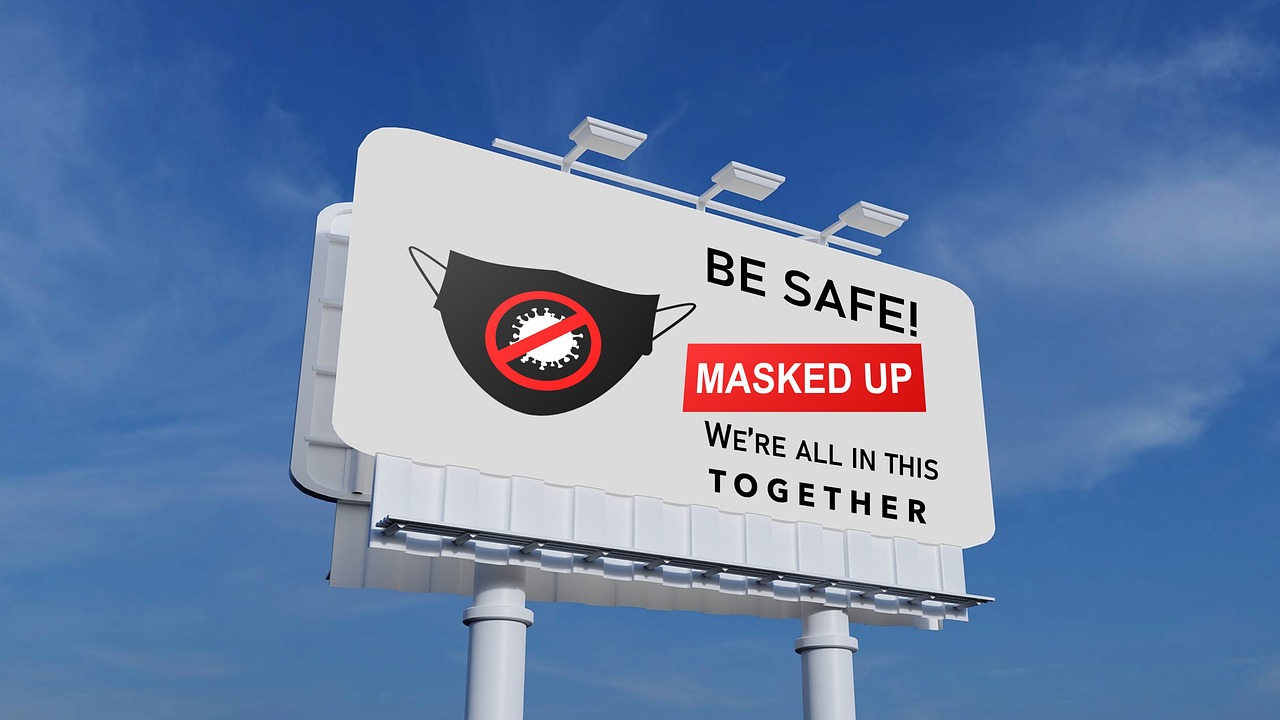A New Dimension to Safety Measures: Understanding Human Behavior
In today's fast-paced world, safety measures are more critical than ever. But what if I told you that the effectiveness of these measures often hinges not just on protocols and equipment, but on the human psyche itself? Understanding human behavior can unlock a new dimension of safety, making protocols not only more effective but also more intuitive. Imagine navigating a maze where every turn is dictated by human decision-making; if we can understand how people think and act in risky situations, we can design safety measures that resonate with their natural instincts. This article dives deep into the intricate dance between safety and psychology, revealing how insights into human behavior can enhance safety protocols across various environments.
Why do some individuals take risks while others play it safe? The answer lies in the psychology of risk perception. It's fascinating to consider that our backgrounds, experiences, and even our emotions can skew how we assess danger. For instance, consider a construction worker who has been in the industry for years. Their familiarity with tools and machinery may lead them to underestimate the risks involved, while a newcomer might be overly cautious. This section explores the myriad factors that influence risk assessment, including past experiences, social influences, and inherent biases. By understanding these elements, safety measures can be tailored to address the specific perceptions and behaviors of different individuals.
Human behavior is a double-edged sword when it comes to safety protocols. On one hand, we have the potential for compliance and adherence; on the other, we face the challenges of distraction, misunderstanding, and even defiance. It's essential to recognize that safety protocols are only as effective as the people who follow them. This section examines how human factors—such as motivation, perception, and cognitive load—can impact compliance. For instance, if safety guidelines are overly complex, workers might skip essential steps. By simplifying protocols and making them more user-friendly, organizations can enhance adherence and ensure a safer environment.
Did you know that cognitive biases can cloud our judgment and lead to unsafe behaviors? These mental shortcuts can distort our perception of risk and influence our decision-making processes in dangerous situations. For example, the overconfidence bias can lead individuals to believe they are invulnerable, prompting them to take unnecessary risks. Similarly, the optimism bias often causes people to underestimate the likelihood of negative outcomes. This section delves into these biases, illustrating how they can undermine safety measures and suggesting strategies to counteract their effects.
Overconfidence can be a silent killer in many environments. When individuals believe they are less likely to make mistakes or encounter accidents, they may engage in risky behaviors, such as ignoring safety gear or skipping crucial safety checks. This section discusses the implications of overconfidence for safety behavior and offers practical strategies to mitigate its impact. For instance, implementing regular training sessions that emphasize the importance of vigilance can help ground employees in reality, reminding them that safety is a shared responsibility.
Optimism bias is another cognitive pitfall that can lead to dangerous situations. People often think, "It won't happen to me," which can result in a lack of preparedness. This section highlights the implications of optimism bias for safety awareness and behavior. By fostering a culture of realistic risk assessment, organizations can encourage individuals to acknowledge potential dangers and take proactive measures to protect themselves. For example, using real-life case studies during training can illustrate the consequences of ignoring safety protocols, making the risks more tangible and relatable.
Stress is a powerful force that can significantly influence how individuals respond to safety measures. High-stress environments can lead to hasty decisions, reduced attention to detail, and impaired judgment. This section discusses the effects of stress on decision-making and risk-taking behavior. Understanding the triggers of stress and implementing strategies to manage it—such as mindfulness training or stress-relief programs—can enhance safety outcomes. After all, a calm mind is a safer mind.
Cultural attitudes toward safety can vary dramatically, shaping behavior and compliance in different communities and organizations. This section examines how cultural factors influence safety practices, highlighting the importance of understanding these nuances. For example, in collectivist cultures, safety may be viewed as a communal responsibility, while in individualist cultures, personal accountability might take precedence. Recognizing these differences can help organizations tailor their safety protocols to align with the cultural values of their workforce.
The balance between collectivist and individualist cultures can significantly affect safety behaviors. In collectivist societies, individuals may be more inclined to prioritize group safety over personal safety, leading to a higher level of compliance with safety protocols. Conversely, in individualist cultures, personal autonomy may sometimes overshadow collective safety concerns. This section explores how these cultural dimensions impact group safety practices and suggests ways to foster a culture of safety that resonates with diverse backgrounds.
Effective education and awareness programs are vital for changing safety behavior. Tailored training that speaks to the specific needs and perceptions of individuals can significantly improve compliance and understanding of safety measures. This section discusses the importance of engaging training methods, such as interactive workshops and scenario-based learning, to make safety protocols more relatable and memorable. By investing in education, organizations can cultivate a workforce that is not only aware of safety measures but also committed to implementing them.
- What is the role of human behavior in safety measures? Human behavior significantly influences the effectiveness of safety protocols, as it determines compliance and adherence to guidelines.
- How do cognitive biases affect safety? Cognitive biases can distort risk perception, leading to unsafe behaviors and poor decision-making.
- What are the effects of stress on safety behavior? Stress can impair judgment and lead to hasty decisions, negatively impacting adherence to safety measures.
- How can education improve safety compliance? Tailored education and awareness programs can enhance understanding and commitment to safety protocols.

The Psychology of Risk Perception
This article explores the intersection of safety measures and human behavior, highlighting how psychological insights can enhance safety protocols and reduce risks in various environments.
Understanding how individuals perceive risk is crucial for developing effective safety measures. Risk perception is not just a straightforward assessment of danger; it is a complex interplay of cognitive, emotional, and social factors. People often evaluate risks based on their experiences, beliefs, and the information available to them. For instance, a person who has never experienced a car accident might underestimate the dangers of reckless driving, while someone who has witnessed a serious crash may be overly cautious. This subjective interpretation of risk can lead to inconsistent behaviors in similar situations.
Several factors influence risk perception, including:
- Personal Experience: Past experiences can shape how we view potential dangers. A traumatic event can lead to heightened sensitivity to similar risks.
- Media Influence: The way risks are portrayed in the media can skew public perception, often leading to exaggerated fears of certain dangers while downplaying others.
- Social Norms: What others believe can significantly impact individual perceptions. If a community views a certain behavior as safe, individuals are likely to adopt that belief, regardless of the actual risks involved.
Moreover, the context in which risks are presented plays a significant role. For example, when people are informed about a potential hazard in a calm and rational manner, they are more likely to respond appropriately. Conversely, if the information is delivered in a panic-inducing way, it can lead to irrational behaviors. This highlights the importance of effective communication in safety protocols.
To further illustrate this, consider the following table that outlines different risk perception factors and their implications for safety measures:
| Factor | Implication for Safety Measures |
|---|---|
| Personal Experience | Tailored safety training can address individual backgrounds and experiences. |
| Media Influence | Educational campaigns should provide accurate information to counteract misinformation. |
| Social Norms | Engaging community leaders can help shift perceptions toward safer behaviors. |
In addition to these factors, cognitive biases can significantly affect how individuals assess risk. For example, the availability heuristic leads people to overestimate the likelihood of events that readily come to mind, often influenced by recent news stories or personal anecdotes. This can cause individuals to react more strongly to certain risks while ignoring others that might be more statistically significant. Understanding these biases is essential for designing effective safety measures that resonate with people's perceptions and encourage safer behaviors.
Ultimately, enhancing safety measures requires a deep understanding of how people perceive risk. By acknowledging the psychological factors at play, organizations can create strategies that not only inform but also motivate individuals to adhere to safety protocols. It’s about bridging the gap between knowledge and behavior, ensuring that safety becomes a shared responsibility rather than an afterthought.
Q: What is risk perception?
A: Risk perception refers to how individuals interpret and respond to potential dangers based on their experiences, beliefs, and available information.
Q: How does personal experience influence risk perception?
A: Personal experiences can shape an individual's sensitivity to risks. Someone who has faced a danger may be more cautious, while someone who has not may underestimate it.
Q: Why is communication important in safety measures?
A: Effective communication helps present risks in a rational manner, leading to appropriate responses rather than panic-driven behaviors.

This article explores the intersection of safety measures and human behavior, highlighting how psychological insights can enhance safety protocols and reduce risks in various environments.
Understanding how individuals perceive risk is crucial for developing effective safety measures. This section delves into factors influencing risk assessment and decision-making in dangerous situations.
When we talk about safety protocols, we often focus on the rules, regulations, and the tools we use to keep ourselves safe. However, the real game-changer lies in the human factors that can either bolster or undermine these measures. It's fascinating to think about how our behavior, emotions, and even our social interactions play a pivotal role in determining the success of safety protocols. Imagine a well-designed safety system that fails simply because people don't follow it. That's where understanding human behavior becomes essential.
One significant aspect of human factors is compliance. Compliance is not just about following rules; it's about the motivations and perceptions of individuals. For instance, if safety measures are perceived as cumbersome or unnecessary, compliance rates can plummet. On the other hand, when individuals understand the rationale behind these measures, they are more likely to adhere to them. This leads to the need for effective communication strategies that explain not only what the safety protocols are but also why they matter.
Moreover, the environment in which safety measures are implemented can greatly influence adherence. For example, a workplace that fosters open communication and encourages employees to voice concerns about safety is likely to see higher compliance rates. People are more inclined to follow protocols when they feel their opinions are valued and their safety is prioritized. This creates a culture of safety where individuals actively engage in maintaining a safe environment.
Another crucial factor is training. It's not enough to just tell people what to do; they need to be trained on how to do it effectively. Training should be tailored to the specific environment and the individuals involved. For example, consider a fire drill. If employees are trained through realistic simulations that mimic actual fire scenarios, they are more likely to remember and follow the procedures when it counts. This hands-on approach enhances not just knowledge but also confidence in executing safety measures.
Additionally, it's important to recognize that human error is an inevitable part of life. Instead of solely blaming individuals for mistakes, we should analyze the underlying causes. Was the safety protocol unclear? Was the environment distracting? By identifying these factors, we can redesign safety protocols to be more intuitive and user-friendly. This proactive approach not only reduces the likelihood of errors but also promotes a culture of continuous improvement.
To sum it up, human factors are integral to the effectiveness of safety protocols. By understanding the motivations, perceptions, and behaviors of individuals, we can create safety measures that are not only effective but also embraced by those who need to follow them. This holistic approach can lead to a safer environment for everyone.
- What are human factors in safety protocols? Human factors refer to the behaviors, emotions, and perceptions of individuals that influence their compliance with safety measures.
- Why is compliance important in safety protocols? Compliance ensures that safety measures are followed, which significantly reduces the risk of accidents and injuries.
- How can training improve safety behavior? Tailored training enhances understanding and confidence in executing safety measures, leading to better adherence.
- What role does communication play in safety compliance? Effective communication helps individuals understand the importance of safety measures, encouraging them to follow protocols.

When it comes to safety measures, understanding cognitive biases is like unlocking a hidden door to better decision-making. These biases, which are systematic patterns of deviation from norm or rationality in judgment, can significantly influence how individuals respond to safety protocols. Imagine you're on a construction site, and your colleague decides to skip wearing a helmet because they believe, “It’s just a minor task; nothing will happen.” This is a classic example of how cognitive biases can lead to unsafe behaviors.
One of the most prevalent biases is the confirmation bias, where individuals tend to favor information that confirms their pre-existing beliefs. For instance, if someone believes that safety gear is unnecessary, they might overlook statistics showing the benefits of wearing protective equipment. This bias not only skews their perception but also puts them and their coworkers at risk.
Another bias that often comes into play is the availability heuristic. This is when people judge the probability of events based on how easily examples come to mind. If a person recently heard about a workplace accident, they might overestimate the likelihood of it happening again, leading to unnecessary panic or overreaction. On the flip side, if they haven’t heard of any incidents in a while, they might underestimate the risk, thinking, “It won’t happen to me.”
The bandwagon effect is also a significant factor in safety compliance. When individuals see their peers neglecting safety measures, they may feel compelled to follow suit, believing that if everyone else is doing it, it must be safe. This herd mentality can be detrimental, especially in environments where safety protocols are critical.
In summary, cognitive biases shape our perceptions and decisions in profound ways. By recognizing these biases, we can develop strategies to mitigate their impact on safety behavior. For example, implementing regular training sessions that highlight these biases can help individuals make more informed decisions. Additionally, creating a culture where safety is prioritized and openly discussed can combat the negative effects of these biases.
To further understand how cognitive biases affect decision-making in safety contexts, consider the following table that outlines some common biases and their implications for safety behavior:
| Cognitive Bias | Description | Implications for Safety |
|---|---|---|
| Overconfidence Bias | Believing one is less at risk than others | Underestimating the need for safety measures |
| Optimism Bias | Assuming negative outcomes are unlikely | Neglecting safety protocols |
| Confirmation Bias | Favoring information that supports existing beliefs | Ignoring safety data that contradicts personal beliefs |
| Availability Heuristic | Judging the likelihood of events based on recent examples | Overreacting or underreacting to safety risks |
| Bandwagon Effect | Following the actions of others | Compromising personal safety due to peer pressure |
- What are cognitive biases? Cognitive biases are systematic patterns of deviation from norm or rationality in judgment, affecting how we perceive and respond to situations.
- How do cognitive biases impact safety measures? They can lead to poor decision-making, causing individuals to underestimate risks or neglect safety protocols.
- What can be done to mitigate the effects of cognitive biases? Regular training and fostering a culture of safety awareness can help individuals recognize and combat these biases.

Overconfidence bias is a fascinating psychological phenomenon that can have profound implications for safety behavior. Imagine you're driving on a familiar road, and you feel invincible, convinced that you can text your friend while navigating the traffic. This sense of invulnerability is a classic example of overconfidence bias, where individuals overestimate their abilities and underestimate potential risks. It's like walking a tightrope without a safety net; the thrill might be exhilarating, but one misstep can lead to disastrous consequences.
This bias often stems from a lack of awareness regarding one's limitations. People tend to believe they are less likely to encounter negative outcomes compared to others. For instance, a construction worker might think, "I've been doing this for years; I know what I'm doing," neglecting basic safety protocols. This belief not only endangers the individual but also puts colleagues at risk. Overconfidence can create a false sense of security that leads to complacency, which is dangerous in environments where safety measures are paramount.
To illustrate the impact of overconfidence bias on safety, consider the following table that outlines common scenarios where this bias manifests:
| Scenario | Overconfident Belief | Potential Risk |
|---|---|---|
| Driving while distracted | "I can handle it; I've driven for years!" | Increased likelihood of accidents |
| Ignoring safety gear | "I won't get hurt; I'm careful." | Higher chances of injury |
| Skipping safety training | "I already know everything I need to know." | Unpreparedness for emergencies |
Addressing overconfidence bias requires a multifaceted approach. Organizations can implement strategies to counteract this bias, such as:
- Regular Training: Frequent safety training sessions can remind individuals of the risks and reinforce the importance of adhering to safety protocols.
- Real-Life Scenarios: Using real-life case studies where overconfidence led to accidents can serve as a wake-up call.
- Feedback Mechanisms: Encouraging feedback on safety practices can help individuals recognize their blind spots.
In conclusion, overconfidence bias can significantly undermine safety measures, leading to reckless behaviors and increased risks. By fostering a culture of humility and awareness regarding personal limitations, we can create safer environments. Remember, it’s not just about knowing the rules; it's about understanding the potential consequences of ignoring them. So, the next time you feel that rush of confidence, pause and consider: Are you truly in control, or is it just an illusion?
- What is overconfidence bias?
Overconfidence bias is the tendency for individuals to overestimate their own abilities and underestimate risks, often leading to unsafe behaviors. - How can overconfidence bias affect safety?
This bias can cause individuals to ignore safety protocols, believing they are less likely to face negative outcomes, which increases the risk of accidents. - What are some strategies to mitigate overconfidence bias?
Regular training, using real-life examples, and implementing feedback mechanisms can help counteract this bias.

Optimism bias is a fascinating psychological phenomenon that leads individuals to believe they are less likely to experience negative outcomes compared to others. Imagine you're at a party, and everyone is talking about the risks of driving home after a few drinks. You might think, "That won’t happen to me; I can handle it." This is optimism bias in action! It’s that inner voice that whispers, "You’re different," making you feel invincible even when the statistics tell a different story.
This bias can have serious implications for safety awareness and behavior. For instance, studies have shown that people often underestimate their chances of being involved in accidents, which can lead to risky behaviors such as not wearing seat belts or ignoring safety protocols. When individuals believe they are less vulnerable, they may neglect essential safety measures, putting themselves and others at risk.
To illustrate the impact of optimism bias on safety, consider the following table that summarizes common scenarios where this bias manifests:
| Scenario | Perceived Risk | Actual Risk |
|---|---|---|
| Driving after drinking | Low | High |
| Ignoring safety gear in sports | Low | High |
| Disregarding fire alarms | Low | High |
As seen in the table, the perceived risk often falls short of the actual risk, highlighting the disconnect between how we view our safety and reality. So, how do we combat this bias? One effective strategy is through education and awareness programs that emphasize the importance of safety measures. By providing individuals with data and real-life examples of negative outcomes, we can help reshape their perceptions and encourage safer behaviors.
Moreover, fostering an environment where individuals feel comfortable discussing risks can also mitigate the effects of optimism bias. When people share their experiences and the consequences of risky behaviors, it not only raises awareness but also creates a sense of community responsibility regarding safety.
In conclusion, while optimism bias can lead to dangerous complacency, understanding its nature is the first step toward enhancing safety protocols. By acknowledging that we are not immune to risks, we can adopt a more realistic approach to safety that protects not just ourselves but also those around us.
- What is optimism bias?
Optimism bias is the belief that one is less likely to experience negative events compared to others. - How does optimism bias affect safety behavior?
It can lead individuals to underestimate risks, resulting in unsafe behaviors and non-compliance with safety measures. - What can be done to reduce optimism bias?
Education, awareness programs, and open discussions about risks can help reshape perceptions and encourage safer behaviors.

Stress is an unavoidable part of our daily lives, and its effects can be profound, especially when it comes to safety behavior. Imagine you're driving in heavy traffic, and suddenly, you get a flat tire. Your heart races, your palms sweat, and your mind begins to whirl with thoughts of how to handle the situation. This heightened state of stress can cloud your judgment, leading to impulsive decisions that may compromise your safety. In essence, stress can act as a double-edged sword; while it can sometimes motivate us to act quickly, it can also hinder our ability to think clearly and make rational choices.
Research shows that under stress, our bodies release hormones like adrenaline and cortisol, which prepare us for a fight-or-flight response. While this reaction can be beneficial in life-threatening situations, it can also lead to risky behaviors in less critical scenarios. For instance, a worker under pressure in a manufacturing plant might skip safety protocols to meet a deadline, believing that they can handle the task without the necessary precautions. This decision-making process, influenced by stress, can lead to accidents and injuries.
Furthermore, stress can affect our perception of risk. When individuals are overwhelmed, they may underestimate potential dangers or overestimate their ability to handle them. This phenomenon can be particularly dangerous in environments like construction sites or healthcare facilities, where adherence to safety protocols is crucial. A stressed worker might think, “I’m fine, I can do this without a harness,” leading to potentially fatal consequences.
To illustrate the impact of stress on safety behavior, consider the following table:
| Stress Level | Impact on Safety Behavior | Potential Consequences |
|---|---|---|
| Low | Increased focus and adherence to safety protocols | Fewer accidents |
| Moderate | Heightened awareness but potential for risk-taking | Possible minor incidents |
| High | Impaired judgment and compliance with safety measures | Increased accidents and injuries |
In addition to individual stress management, organizations can play a pivotal role in mitigating the effects of stress on safety behavior. Implementing regular training sessions that focus on stress management techniques can empower employees to handle pressure more effectively. For example, mindfulness practices, breathing exercises, and time management strategies can help individuals maintain composure in high-stress situations.
Moreover, fostering a supportive work environment where employees feel comfortable discussing their stressors can lead to better overall safety outcomes. When team members are encouraged to communicate openly about their challenges, it cultivates a culture of safety and shared responsibility. This approach not only enhances individual well-being but also strengthens collective adherence to safety protocols.
In summary, understanding the relationship between stress and safety behavior is vital for both individuals and organizations. By recognizing the signs of stress and implementing effective strategies to manage it, we can significantly reduce risks and enhance safety in various environments. After all, safety is not just a set of protocols; it's a culture that thrives on awareness and proactive measures.
- How does stress affect decision-making in safety scenarios?
Stress can impair judgment, leading to impulsive and risky decisions that compromise safety. - What strategies can help manage stress in high-pressure environments?
Techniques such as mindfulness, breathing exercises, and effective time management can help mitigate stress. - Can organizational culture influence stress levels and safety behavior?
Yes, a supportive culture that encourages open communication can help employees manage stress and adhere to safety protocols.

When we think about safety, it’s easy to focus solely on the rules, regulations, and equipment designed to keep us safe. However, the cultural context in which these safety measures are implemented plays a crucial role in their effectiveness. Different cultures have varying attitudes toward safety, which can significantly influence compliance and behavior in potentially hazardous situations. For instance, in some cultures, there is a strong emphasis on community and collective responsibility, while in others, individualism may take precedence, affecting how safety protocols are perceived and followed.
In collectivist cultures, safety is often viewed as a shared responsibility. This means that individuals are more likely to adhere to safety measures, seeing them as part of a larger obligation to protect not just themselves but also their peers. On the other hand, in individualistic cultures, individuals may prioritize personal freedom over compliance with safety protocols, leading to a higher likelihood of risky behaviors. Understanding these cultural nuances is essential for organizations aiming to enhance their safety practices.
Moreover, cultural norms can dictate how safety training is delivered and received. For example, in some cultures, hierarchical structures may influence how information is communicated. If safety instructions come from a lower-ranking employee, they may not be taken seriously. Therefore, it’s vital for organizations to consider their cultural environment when developing training programs. Tailoring training to resonate with the local culture can improve engagement and compliance.
To further illustrate the impact of culture on safety practices, consider the following table that outlines key cultural dimensions and their implications for safety behavior:
| Cultural Dimension | Implication for Safety Behavior |
|---|---|
| Collectivism | Higher compliance with safety measures due to shared responsibility. |
| Individualism | Potential disregard for safety protocols in favor of personal choice. |
| Power Distance | Influences communication; lower adherence if safety instructions come from lower ranks. |
| Uncertainty Avoidance | Higher preference for detailed safety procedures and guidelines. |
Another important aspect is the role of education and awareness programs in shaping safety practices across cultures. Effective programs that consider cultural sensitivities and learning styles can lead to significant changes in behavior. For instance, using real-life scenarios that reflect the community's values can make safety training more relatable and impactful. By engaging individuals in discussions and activities that resonate with their cultural context, organizations can foster a deeper understanding of safety measures.
In conclusion, recognizing the influence of culture on safety practices is not just an academic exercise; it’s a practical necessity for improving safety outcomes. By embracing cultural differences and tailoring safety protocols accordingly, organizations can create a safer environment that respects and understands the diverse perspectives of their workforce.
- How can organizations assess the cultural attitudes toward safety in their workforce?
Organizations can conduct surveys, focus groups, and interviews to gather insights into employees' perceptions and attitudes toward safety. - What role does effective communication play in enhancing safety practices?
Clear and culturally relevant communication helps ensure that safety protocols are understood and followed, reducing the risk of accidents. - Can safety training be standardized across different cultures?
While some core principles can be standardized, training should be adapted to fit the cultural context of the audience for maximum effectiveness.

When we talk about collectivism and individualism, we're diving into two distinct cultural paradigms that shape how people behave, especially in terms of safety practices. In collectivist cultures, the emphasis is on the group rather than the individual. This means that people are more likely to prioritize the well-being of their community over personal desires. For instance, in a workplace that fosters a collectivist mindset, employees might adhere strictly to safety protocols because they understand that their actions can impact their colleagues. They work together, sharing responsibilities and outcomes, which can lead to a more cohesive approach to safety.
On the flip side, in individualistic cultures, the focus is on personal autonomy and self-reliance. Here, individuals might feel empowered to make their own decisions, which can sometimes lead to risky behaviors if they underestimate the importance of safety measures. For example, someone in an individualistic society might choose to skip wearing protective gear because they believe it's their right to assess their own risks. This can create a challenging environment for safety compliance, as individuals may prioritize their personal freedom over collective safety.
Understanding the balance between these two cultural dimensions is crucial for organizations aiming to enhance safety practices. In environments where individualism prevails, it might be beneficial to implement strategies that emphasize the importance of community and collective responsibility. This could involve:
- Encouraging teamwork in safety drills
- Highlighting the benefits of shared safety practices
- Creating a culture where employees feel responsible for each other's safety
Conversely, in collectivist settings, it’s essential to recognize and celebrate individual contributions to safety. Acknowledging personal accountability can motivate individuals to take ownership of their roles within the group. This dual approach can foster a culture where safety is seen as a shared value, leading to improved compliance and reduced risks.
To illustrate this further, consider a workplace safety program that integrates both perspectives. A company might implement a safety initiative that encourages team challenges, where groups compete to demonstrate the best safety practices. This not only bolsters the collectivist approach by fostering teamwork but also allows individuals to shine within that framework, satisfying their need for personal recognition.
Ultimately, recognizing the impact of cultural dimensions like collectivism and individualism on safety practices can lead to more effective strategies. By tailoring safety protocols to fit the cultural context of the organization, leaders can enhance compliance and create a safer environment for everyone involved.
- What is collectivism? Collectivism is a cultural orientation that emphasizes the needs and goals of the group over those of the individual.
- How does individualism affect safety behavior? Individualism can lead to personal decision-making that may overlook safety protocols, as individuals prioritize their own preferences over group safety.
- Can a balance between collectivism and individualism improve safety? Yes, integrating both perspectives can create a more comprehensive safety culture, enhancing compliance and reducing risks.

When it comes to enhancing safety behavior, education and awareness programs are absolutely essential. These programs serve as the backbone of any effective safety initiative, aiming to not just inform individuals but to genuinely transform their attitudes toward safety protocols. Think of it like teaching someone to ride a bike; it’s not just about showing them how to pedal but also instilling a sense of balance and awareness of their surroundings. In the same way, safety education should focus on developing a culture of awareness where individuals understand the implications of their actions.
One of the key elements in these programs is the use of tailored training sessions. Each environment—be it a construction site, a corporate office, or a healthcare facility—has its unique risks and challenges. Therefore, a one-size-fits-all approach simply won’t cut it. For example, a training program designed for a manufacturing plant might emphasize machinery safety and protective gear, while one for a hospital would focus more on patient handling and infection control. By customizing the content, organizations can ensure that participants are not only engaged but also receiving relevant information that resonates with their daily tasks.
Moreover, the delivery method of these programs plays a crucial role in their effectiveness. Traditional classroom settings can sometimes feel dull and uninspiring. Instead, incorporating interactive elements such as role-playing scenarios, simulations, and even gamification can significantly enhance engagement levels. Imagine a safety training session where employees participate in a simulated emergency response. This hands-on experience not only reinforces learning but also builds confidence, making individuals more likely to adhere to safety protocols when faced with real-life situations.
Another important aspect is the use of visual aids and multimedia resources. A well-designed infographic or an engaging video can often communicate complex safety concepts more effectively than lengthy text. For instance, a short video demonstrating the correct use of personal protective equipment (PPE) might stick in someone’s mind far better than a written manual. By appealing to various learning styles—visual, auditory, and kinesthetic—organizations can ensure that their safety messages are reaching everyone.
Finally, the impact of ongoing education cannot be overstated. Safety is not a one-time training session; it’s a continuous journey. Regular refresher courses and updates on new safety protocols are vital to keep safety at the forefront of everyone’s mind. This can be supplemented with awareness campaigns that highlight specific safety issues relevant to the workplace. For example, a campaign focused on fire safety during Fire Prevention Week can serve as a timely reminder and encourage proactive safety behavior.
In conclusion, investing in comprehensive education and awareness programs is not just about compliance with regulations; it’s about fostering a culture of safety that empowers individuals. When people are educated about risks and equipped with the right knowledge and skills, they are more likely to make informed decisions that prioritize their safety and the safety of others. After all, in the realm of safety, knowledge truly is power.
- What are the key components of an effective safety training program? An effective program should include tailored content, engaging delivery methods, visual aids, and regular updates.
- How often should safety training be conducted? Regular refresher courses should be conducted at least annually, with updates provided whenever new protocols are introduced.
- Can safety training be done online? Yes, many organizations are now utilizing online platforms to deliver safety training, which can be more flexible and accessible for employees.
- What role does management play in safety training? Management should actively support and participate in safety training initiatives to demonstrate their commitment to a culture of safety.
Frequently Asked Questions
- What is the relationship between human behavior and safety measures?
The relationship between human behavior and safety measures is crucial. Understanding how people think and act can significantly enhance safety protocols. By incorporating psychological insights, organizations can design safety measures that are more likely to be followed, thus reducing risks in various environments.
- How does risk perception affect safety behavior?
Risk perception plays a vital role in how individuals respond to safety measures. People assess risks based on personal experiences, cultural background, and cognitive biases. For example, someone who underestimates a risk due to overconfidence may not adhere to safety protocols, leading to potentially dangerous situations.
- What are cognitive biases, and how do they influence decision-making?
Cognitive biases are systematic patterns of deviation from norm or rationality in judgment. They can lead individuals to make poor decisions regarding safety. For instance, optimism bias might cause someone to believe that accidents won't happen to them, resulting in a lack of caution in risky situations.
- How does stress impact safety behavior?
Stress can cloud judgment and lead to impulsive decisions. When under stress, individuals may ignore safety protocols or take unnecessary risks. Understanding the effects of stress on behavior is essential for creating effective safety measures that consider how people react in high-pressure situations.
- How do cultural attitudes influence safety practices?
Cultural attitudes significantly shape how safety is perceived and practiced. In collectivist cultures, there may be a stronger emphasis on group safety and adherence to protocols, while individualistic cultures might prioritize personal freedom, potentially leading to less compliance with safety measures.
- What role do education and awareness programs play in safety compliance?
Education and awareness programs are critical for improving safety behavior. Tailored training can help individuals understand the importance of safety measures and how to implement them effectively. By addressing specific cultural and behavioral factors, these programs can lead to better compliance and overall safety outcomes.



















